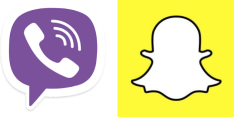Delayed first mobile audience data shows Viber more popular than Snapchat and WhatsApp
The first detailed data for Australian mobile audiences shows smartphones are now the most commonly used device for Australians and that communications app Viber has a bigger unique audience than youth-oriented instant messaging service Snapchat and competitor WhatsApp.
Digital industry body the Interactive Advertising Bureau’s (IAB) first mobile panel, which measures web-based and app-based browsing, also gives a breakdown of unique audiences for news sites showing traditional publishers such as News.com.au, SMH.com.au and the ABC are the most-visited on phones and tablets.
Both the IAB and measurement company Nielsen have defended the six-month delay in getting the first Mobile Ratings Report to market saying it was necessary to make sure they got the data right.



Any actual hard numbers/figures to share on use of Viber vs Snapchat, WhatsApp, etc? It’s the hook for this story but is just a throwaway line at the beginning of the article with no further detail.
Hi Action Pickle,
Apologies there were a number of charts being given out by IAB and Nielsen this morning.
The story and chart at the bottom has been updated to include precise numbers for all the messaging services.
Cheers
Nic – Mumbrella
Love